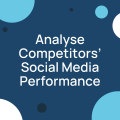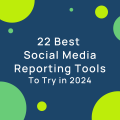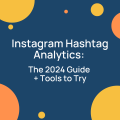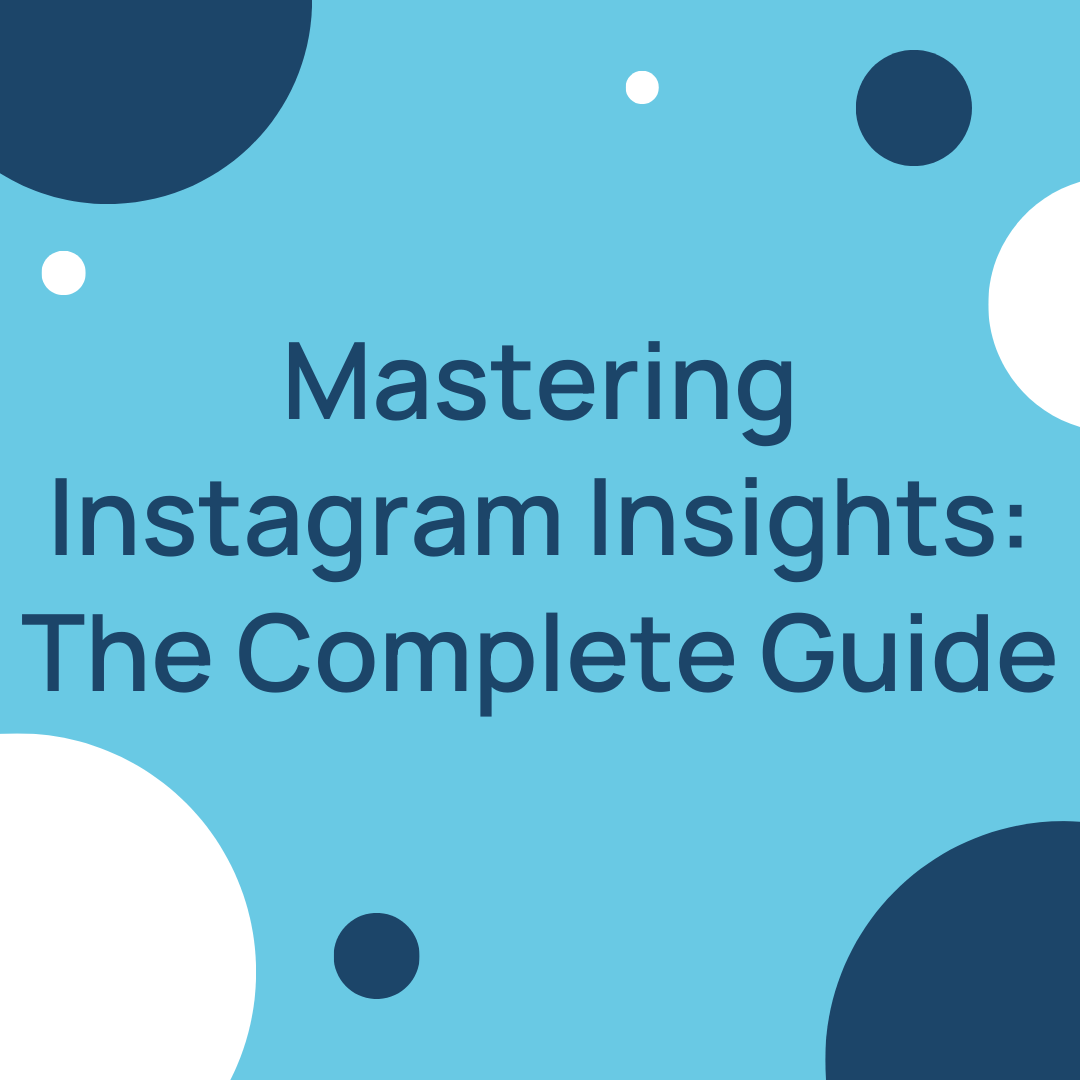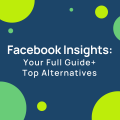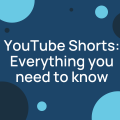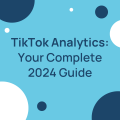July was a very busy summer month in the world of Facebook. Let’s get straight into our roundup on growth, reach, engagement and all the other important happenings that you need to know in order to run a Facebook page successfully.
15 Facebook Page Growth, Reach And Engagement Facts Of Summer
Tina Ahmed posted on 13 August 2015
For our study we looked at 5,000 Facebook pages in the month of July. Let’s start by looking into the growth numbers of organic page likes.
There was a slight increase in organic page growth in July compared to the last time we looked at pages in the month of May. Average growth of organic page likes was at 0.21% in July which is slightly higher than the 0.2% growth of page likes we saw in the month of May.
This number was at 0.1% for the largest pages, those with over 1 million page likes. Even the smallest pages, those with less than a thousand page likes, had a difficult time growing organically with a 0.3% growth of page likes.
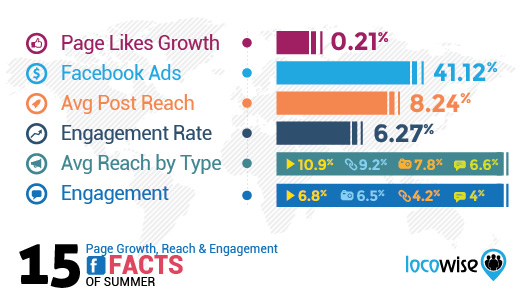
This confirms once again that Facebook is now a pay to play platform, especially if you’re looking into page growth.
Facebook reported their earnings for the second quarter of the year during the month. Some big numbers were announced.
There are now 968 million daily active users and 1.49 billion monthly active users on Facebook. A user spends 46 minutes per day between Facebook, Facebook Messenger, and Instagram.
There are 40 million businesses as well as 2 million advertisers on the platform.
Here’s an infographic that Facebook produced to summarise all the main stats announced:
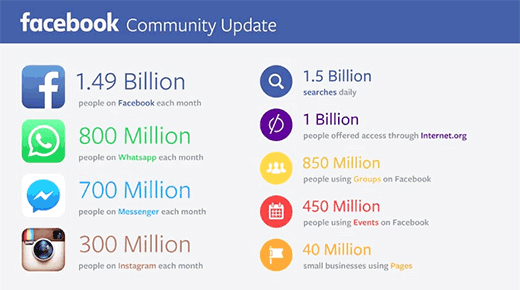
41.12% of all pages we looked at in our study used Facebook ads paying for 28.56% of the total reach. This is a small decrease compared to 43.36% we saw using ads in the month of May.
54.05% of pages with over 1 million page likes used advertising, paying for 29.94% of their reach. This is a 12% increase compared to May where 48.28% of the largest pages were using ads.
There was some good news for Facebook advertisers as it was announced that only true link clicks will count for pay per click advertising. Right now advertisers are paying for any click including engagement clicks such as a like, a comment or a click on the picture.
With this change the advertiser will need to pay only for the clicks to another website or clicks on call-to-actions. This should provide a lot more value to the ad campaigns, as long as the true link clicks don’t become more expensive. Time will tell.
Average post reach was at 8.24% of the total page audience for the 5,000 pages we looked at in July. This is slightly lower than the 8.34% we saw in May.
For the largest pages this was at 6.66%. For the smallest pages, those with less than 1,000 page likes, this was at 13.85%.
Average engagement rate was at 6.27% of people reached, which is a 6% decrease compared to the 6.61% we saw in May. The largest pages engaged more than the average with 6.73% engagement rate, but still saw a 25% decrease in engagement compared to the month of May.
Is your engagement rate below the already-lower average? Take a look at these tips in order to optimize it.
One of the big announcements in the month was the new curation feature that allows users to select friends and pages they’d like to see first in their news feeds. If selected the user will see any posts the page has posted since his or her last visit at the top of the news feed. This should help boost the organic reach for the selected brands.
But how do you get your users to select your page? As always you need to resonate with your audience. You need to be relevant to them and entertaining or useful. Your content must be so good that the user will miss it if it doesn’t show in their newsfeed. Only in that case is a user likely to select to see your content first.
Social media marketers normally respond with the “it’s impossible to create continuously great content to publish multiple times a day”. The response is that it is not necessary to publish new content very often on Facebook. Posting less actually means getting more organic reach and engagement from your audience as seen in our posting frequency study.
For some ideas on creating great content take a look at these lessons learned from the largest Facebook pages.
This “See first” feature is already available on the iOS app and will be rolling out to Android and desktops shortly.

Video posts reached 10.89% of the audience on average in July, which is 8% down compared to the 11.86% reach in the month of May. Links reached 9.23%, photos reached 7.79% and status updates reached 6.57% of the total page likes.
Videos were also the most engaged with format by engaging 6.79% of page likes reached on average, which is a 3% increase compared to 6.61% in May. Photos engaged 6.57%, down from 7.06% in May. Links engaged 4.25% and status updates engaged 4.05% of page likes reached.
For largest pages video was the most engaging format too, performing especially well with 9.32% engagement rate. Photos got 6.56% engagement, links 4.49% and status updates 3.12%.
These numbers show once again why your brand needs to get into video. In our recent video study we saw that 47% of all Facebook pages don’t upload videos. If you’re one of these pages, it is time for you to develop a video content strategy. One way you can get inspired is by taking a look at these nine brands that are perfecting the art of Facebook video.
We talked about Facebook native video getting higher reach and engagement than YouTube videos when posted on Facebook pages and Facebook is trying to make your decision even clearer in favour of native videos.
A couple of new features have been announced in order to bring native videos closer to the features of YouTube videos. Page owners can now upload secret videos that can only be viewed by having the specific URL. Page owners can also allow videos to be embedded on other sites, add expiration dates to video posts, restrict the audience and even publish videos on their page without the video being distributed on the news feed and the timeline of the page. Another YouTube feature that Facebook is testing is the option for people to add a video to the “watch later” list.
Facebook is becoming a big video player and these changes give page owners so many more options to work with. Posting YouTube video links on your Facebook pages is not an option you should be choosing any longer. Facebook now goes as far as presenting you a note which states that you should consider uploading native video instead when you try to post a YouTube link.
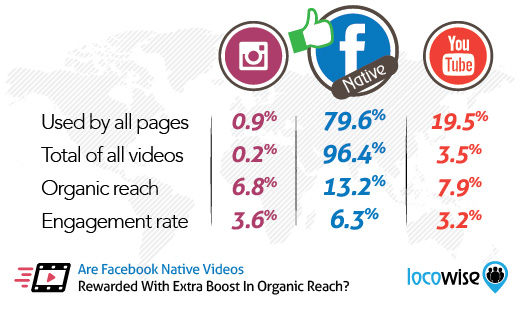
Post native videos on Facebook as that will give you the best organic reach and engagement, and focus on YouTube videos on your YouTube channel and on your own website instead.
One interesting piece of news for e-commerce brands is that Facebook is working on allowing companies to build shops within their Facebook pages. This would allow fans to buy products directly on Facebook rather than leaving the platform to make a purchase. The idea is for the entire experience from discovering the product and then eventually buying the product to take place within the world of Facebook.
This feature is in the testing stages right now and not many details are known, such as if Facebook will be taking a percentage of the sales, but the news will definitely be interesting to lots of e-commerce brands.
These are the three steps we would recommend brands take in order to give themselves a chance of succeeding on Facebook right now:
1. Get a budget agreed and start using Facebook advertising in order to get your page and content out to a larger and more targeted audience.
2. Get a budget agreed for the creation of great video content that you can upload natively on Facebook.
3. Post only the best, most informative, most relevant, most entertaining content that you can. Each and every post needs to delight your audience
Do take a look at Locowise Facebook Analyser in order to compare your own page performance against the metrics of the 5,000 pages in this study; organic growth, reach and engagement. Facebook Analyser is a quick way to get a clear overview of how well you’re doing right now and where you can improve your activities straight away.

